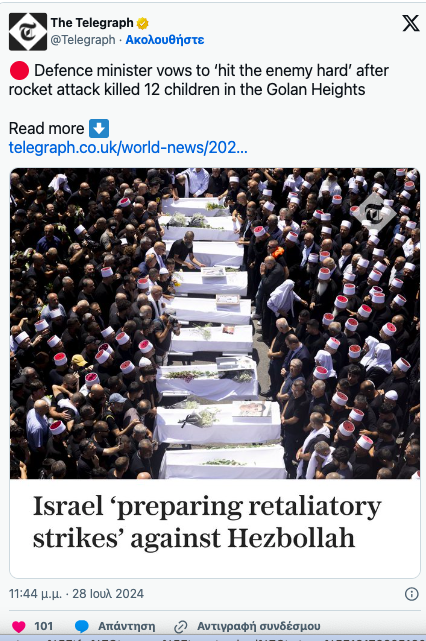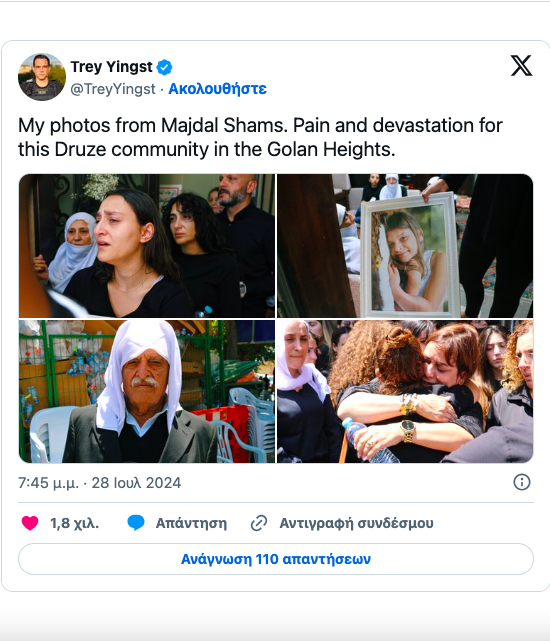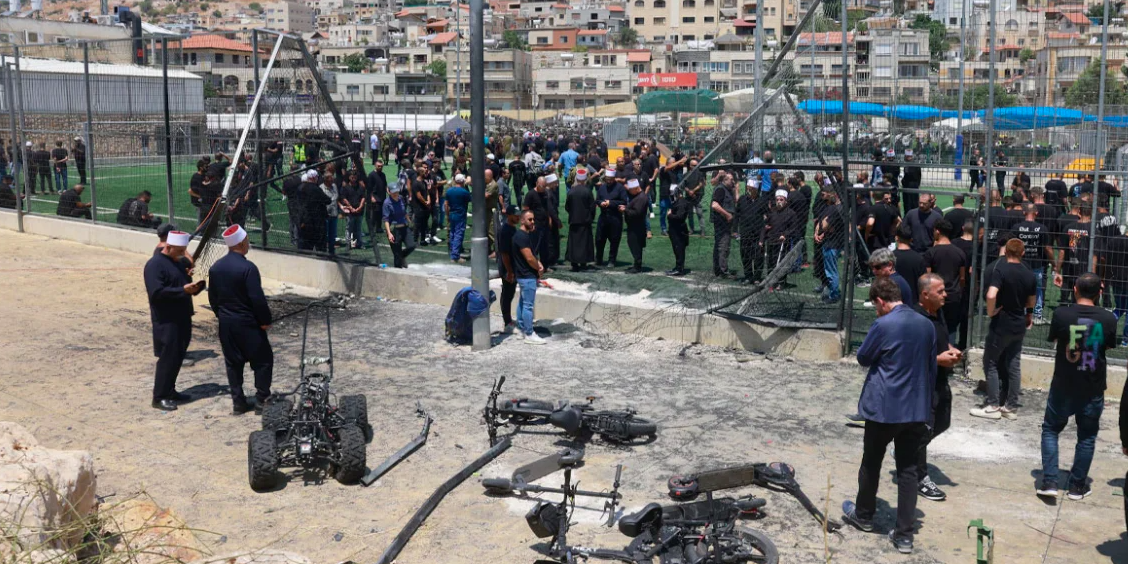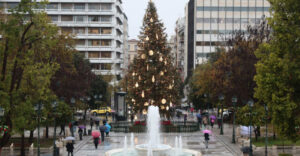The Middle East is on the brink of a full-scale war capable of igniting the region’s “powder keg” after Israel accused Hezbollah of a deadly attack on the annexed Golan Heights, which resulted in the deaths of 12 children. Israel, which is considering how to “retaliate,” has promised that the Lebanese organization (which denies involvement in the attack) “will pay a heavy price,” while Hezbollah’s main ally, Iran, warned of “unimaginable consequences” if attacked.
Despite frequent skirmishes between the two sides in the region, this time the situation has dangerously escalated. Thousands who attended the funeral of the 12 children demanded revenge, prompting Israeli Prime Minister Benjamin Netanyahu to cut short his U.S. trip and urgently return to Israel to participate in a war council.

As Beirut calls for an international investigation into the deadly attack, the IDF launched airstrikes “deep into Lebanese territory” early in the morning and successfully intercepted a drone launched from Lebanon around 5 a.m. today.
As Israel’s war council has yet to announce how it will retaliate, the international community is on high alert, using all diplomatic channels to avoid an Israel-Hezbollah war, which could trigger a broader conflict in the region. Such a war could have devastating consequences for both sides, especially for Lebanon, which is mired in a deep, multi-year economic crisis, with 80% of its population living below the poverty line. Lebanon is also facing a political crisis, unable to elect a president for two years, with its weak government having little—if any—influence over Hezbollah, which is backed by Iran and designated as a terrorist organization, like Hamas.

Hezbollah, led by Sheikh Hassan Nasrallah, is one of the most heavily armed non-state military organizations globally, funded and equipped directly by Tehran. Nasrallah claims its force is around 100,000 men, though estimates range between 20,000 and 50,000. What is certain is that they are well-trained, with combat experience from the Syrian conflict. Hezbollah’s arsenal includes 130,000 rockets and missiles, primarily ground-to-ground, but also anti-aircraft and anti-ship, along with military drones capable of striking Israeli territory.
Missile Malfunction?
The two sides engaged in almost daily skirmishes, mainly along the Lebanon-Israel border, especially after Hamas attacks on the Jewish state. However, there was an informal mutual effort to prevent escalation. What went wrong this time? All indications point to a mistake. Israel announced that the rocket that struck a football field in Majdal Shams, killing 12 children aged 10 to 16 and injuring about 30 others, with a 13-year-old missing, was an Iranian-made Falaq-1 missile with a 53-kilogram warhead.
Hezbollah denies responsibility for the attack, but it is the only group with such missiles, as noted by the Israeli Ministry of Foreign Affairs. Moreover, shortly before the extent of the casualties was known, Hezbollah announced that it had attacked the Israeli Hermon Brigade with an Iranian Falaq missile. The fact that the Israeli brigade is based on Mount Hermon, about 3 kilometers from the site of the deadly attack, increases the likelihood that Hezbollah’s missile missed its target.
Ask me anything
Explore related questions





